Have you ever wondered if a CSA (community supported agriculture) or farmers market is the better deal? Get a cost breakdown of 2 CSAs versus 2 farmers markets, and see which is more affordable with this CSA Farmers Market comparison guide! Learn more about shopping at CSAs and farmer’s markets!
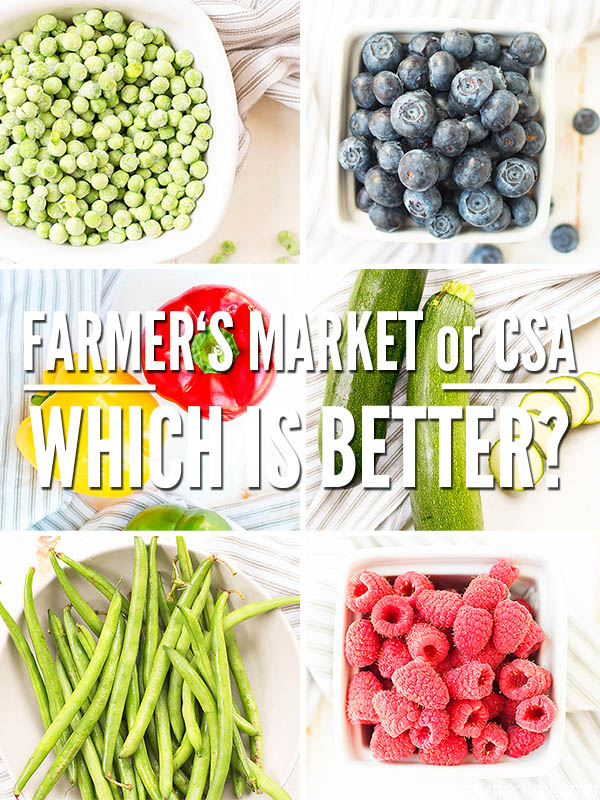
When eating real food on a budget, there are two places where most people get stuck: the very beginning, and the very end.
With a few helpful tools (see below), creating a grocery budget is for the most part painless. But keeping the budget in tact is a different ballgame.
Food prices are on the rise and evaluating our purchases on an on-going basis is the only way to make sure we’re STILL spending our grocery dollars wisely.
So far I’ve questioned milk and cheese. I’ve also shared reasons for joining a CSA and reasons to shop the local farmers market.
(In case you didn’t know what C S A stands for, it’s: community supported agriculture. This is a group of people who commit to financially supporting a local farm, and then share in the produce for a specified amount of time.)
But if you could only choose one, which is the better deal: the CSA or Farmers Market?
Before we jump into the numbers, let’s get some basics out of the way.
- Both the CSA (community supported agriculture) and the farmers market offer fresh, local foods from local farmers.
- Supporting local business is something we try to do whenever we can, so it’s a win in either case.
- Both the CSA and farmers market offer various selections of foods you wouldn’t ordinarily buy from the grocery store.
- I wouldn’t have known I don’t like fennel if it weren’t for my CSA box, and the only time I’ve ever seen kumquats was at the local market. Plus more variety means more nutrients, and it helps to thwart the development of picky eaters too.
- Both the CSA and farmers market are usually comprised of organic produce.
- I’ve shared with you my concerns about the organic system as a whole, but there are lots of benefits to buying organic produce too (when the budget allows, of course) and organic food is high on the priority list for many families.
In short, I think it’s fair to say that the quality of food you get from a CSA is relatively the same as the quality of the food you get from a farmers market. The biggest difference of course, will be the cost.
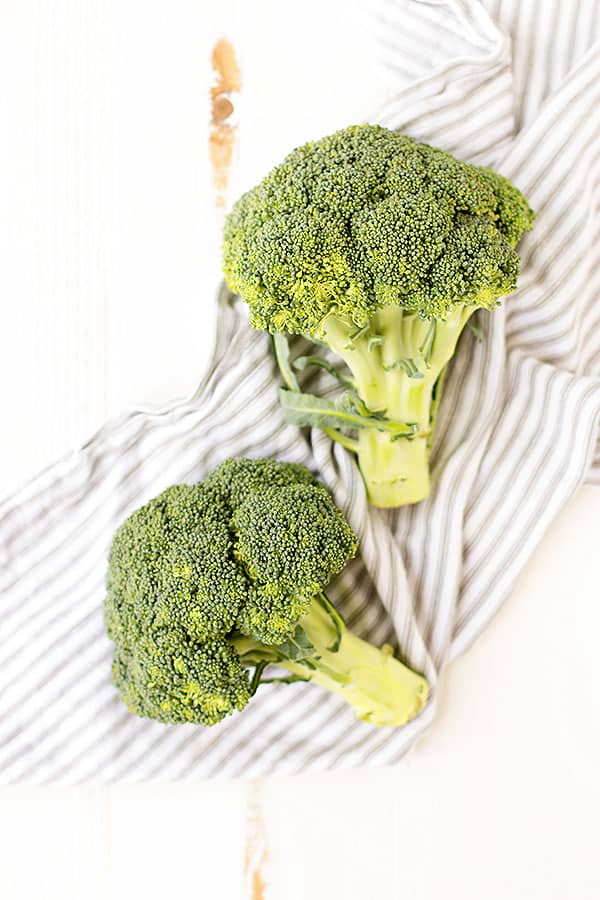
Facts About CSA’s and Farmer’s Markets
I’ll be comparing two local CSA’s to two local farmers markets, but to keep the playing field even and offer full disclosure, here are some basic facts about each of them.
CSA #1
A small, family-owned and operated, certified organic by California Certified Organic Farmers and grows 30 different local vegetables on-site mostly year-round. Pick-up on site is available.
CSA #2
A large, family-owned CSA farm that grows on 75 acres year-round. It has delivery options to nearby cities for local pick-up and also sells at local farmers markets.
Farmers Market #1
The farmer’s market hosts 5-10 stands each week in a less-populated and infrequently visited town. They have a 60/40 ratio of organic versus conventional produce with good selection throughout operating hours.
Farmers Market #2
This farmer’s market hosts 15-25 stands each week in a high-trafficked area in frequently visited town. There is a 90/10 ratio of organic versus conventional produce with selection waning about mid-way through operating hours.
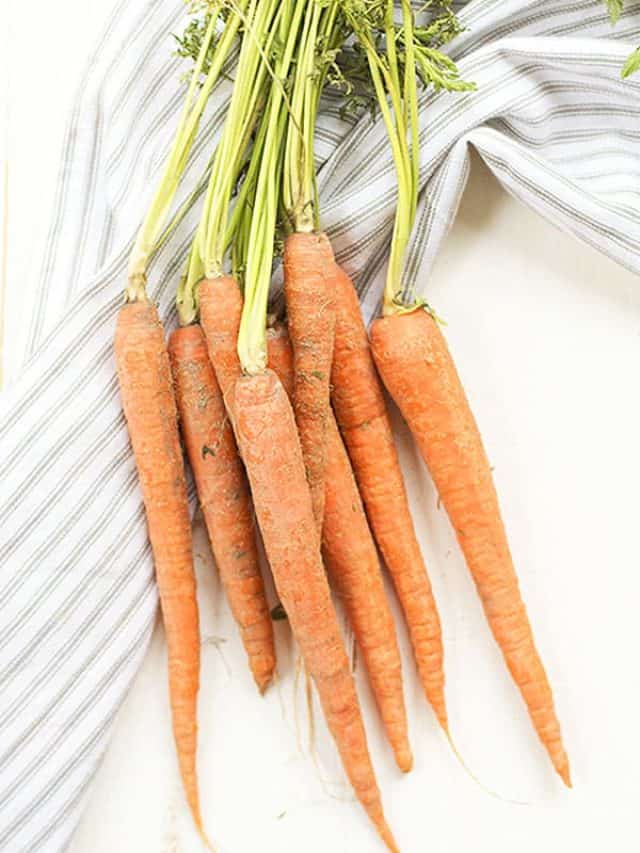
CSA vs. Farmer’s Market Pricing
Note: The pricing below likely does not reflect actual current pricing, but the comparison between the pricing of CSAs and Farmer’s Markets is still accurate.
CSA #1
- This CSA charges $25 per week for a 27 week season (starting mid-May), but they also offer up to 10% the weekly cost if you sign up for the season and pay up-front.
- Signing up for the full season is the best deal, bringing the weekly price down to $21.59.
- Members also receive a discount card for purchases in their store, saving up to 10% on additional items.
- Each CSA box contains a total of 10 items with a variety of fruits and vegetables, depending on availability and crop yield.
CSA #2
- Charges $25 per week for a 33 week season (starting mid-April) and offer “credits” for paying up front.
- The best deal possible offers a credit of $15, bringing the weekly price down to $24.55.
- Each box contains a total of 10 items with a variety of fruits and vegetables, depending on availability and crop yield.
Farmers Market #1
- In general, these prices are in-line with grocery store prices.
- Certified organic produce averages $1.50/lb with many options in the $1-1.50 range for non-certified organic produce.
- The stands do base pricing on what other stands are charging, and are willing to negotiate when buying multiple items or in bulk.
Farmers Market #2
- In general, tends to be on the pricier side and in-line with prices found at the typical health food store.
- Rarely is there certified organic produce for less than $2/lb, but there are plenty options in the $1.50-1.75/lb range for non-certified organic produce.
- There are only a couple stands that have ever offered items for less than $1/lb and the stands do not compete with each other (meaning their prices are fixed regardless of what others are charging).
- Only a few stands offer bulk discounts.
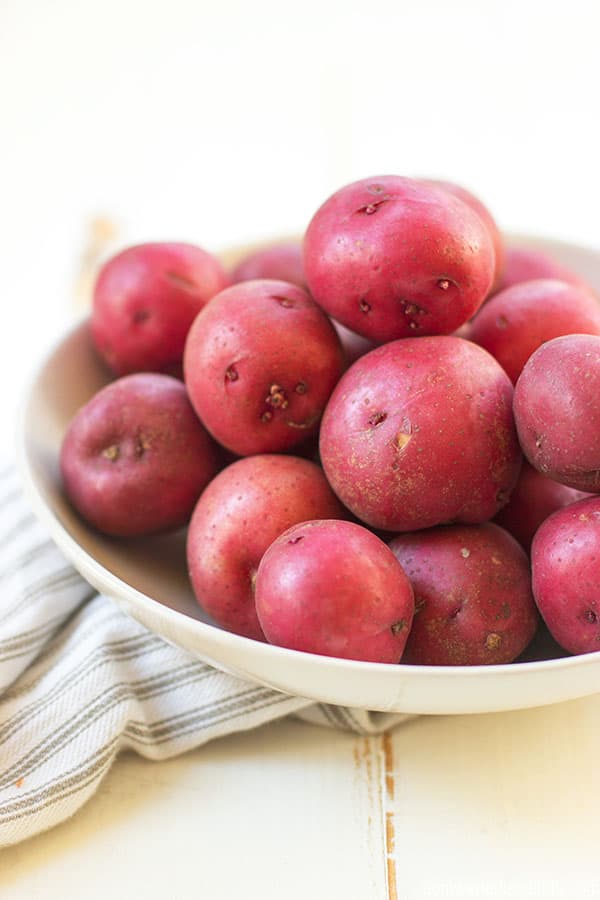
The Food and Cost Comparison for CSA #1
CSA #1
The prices below likely do not reflect current pricing, but you’ll get the general idea of the cost comparisons and you can see how similar and different CSAs and Farmer’s Markets can be. Unless otherwise noted, there is one of each item listed and each item equals approximately 1 pound.
- head of broccoli
- head romaine
- cucumbers (2)
- bunch beets
- garlic bulb
- basket of strawberries (3)
- carrots – bunch
- radishes – bunch
- spinach -bunch
- basket of figs
Since there’s no way to determine the exact cost per item, the cost of the entire box is divided equally between each item. One week of CSA #1 costs $21.59 and each item costs $2.16.
If I took this list and shopped Farmer’s Market #1, here’s what I would pay:
- head of broccoli – $1.50
- head romaine – $1
- cucumbers (2) – $1
- bunch beets – $1.50
- garlic bulb – 75¢
- basket of strawberries (3) – $6
- carrots – $2
- radishes -$2
- spinach – $2
- basket of figs – $4
Total for shopping at Farmer’s Market #1 is $21.75.
If I took this list and shopped Farmer’s Market #2, here’s what I would pay:
- head of broccoli – $1.50
- head romaine – $1.50
- cucumbers (2) – $2
- bunch beets – $2
- garlic bulb – $1
- basket of strawberries (3) – $10
- carrots – $3
- radishes – $3
- spinach – $2.50
- basket of figs – $5
Total for shopping at Farmer’s Market #2 is $31.50.
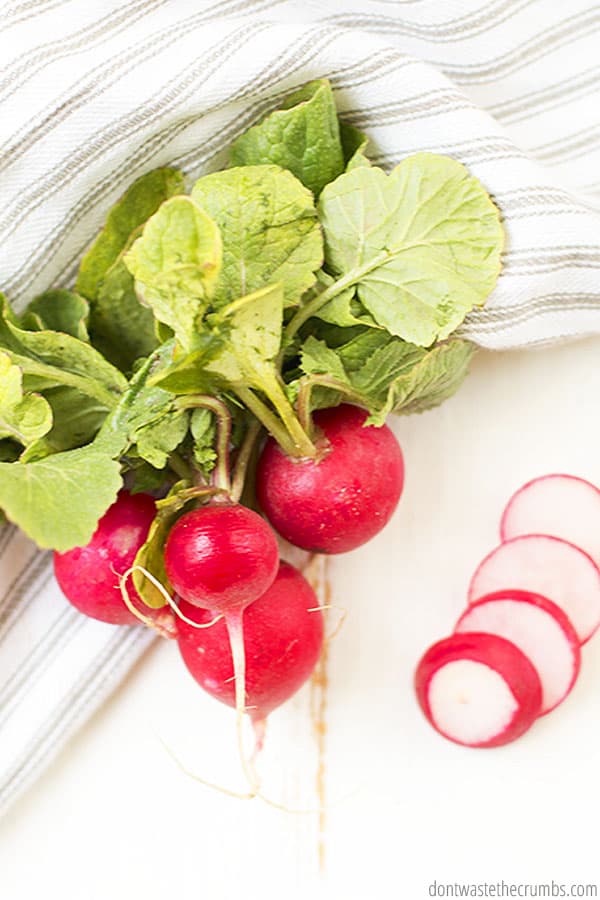
The Food and Cost Comparison for CSA #2
The prices below likely do not reflect current pricing, but you’ll get the general idea of the cost comparisons and you can see how similar and different CSAs and Farmer’s Markets can be. Unless otherwise noted, there is one of each item listed and each item equals approximately 1 pound.
- bunch of beets
- head of cabbage
- bunch of carrots
- chard
- bunch of cilantro
- fava Beans
- garlic, Green
- kale, lacinato
- leeks
- head of lettuce
Since there’s no way to determine the exact cost per item, the cost of the entire box is divided equally between each item. One week of CSA #2 costs $24.55 and each item costs $2.46.
If I took this list and shopped Farmer’s Market #1, here’s what I would pay:
- bunch of beets – $1.50
- head of cabbage – $2
- bunch of carrots – $2
- chard – $2
- bunch of cilantro – $1
- fava Beans – $3
- garlic, Green – $2
- kale, lacinato – $1.50
- leeks – $2
- head of lettuce – $1
Total for shopping at Farmer’s Market #1 is $18.25.
If I took this list and shopped Farmer’s Market #2, here’s what I would pay:
- bunch of beets – $2
- head of cabbage – $2.50
- bunch of carrots – $3
- chard – $3
- bunch of cilantro – $1.50
- fava Beans – $4
- garlic, Green – $2.50
- kale, lacinato – $2
- leeks – $2.50
- head of lettuce – $1.50
Total for shopping at Farmer’s Market #2 is $24.50.
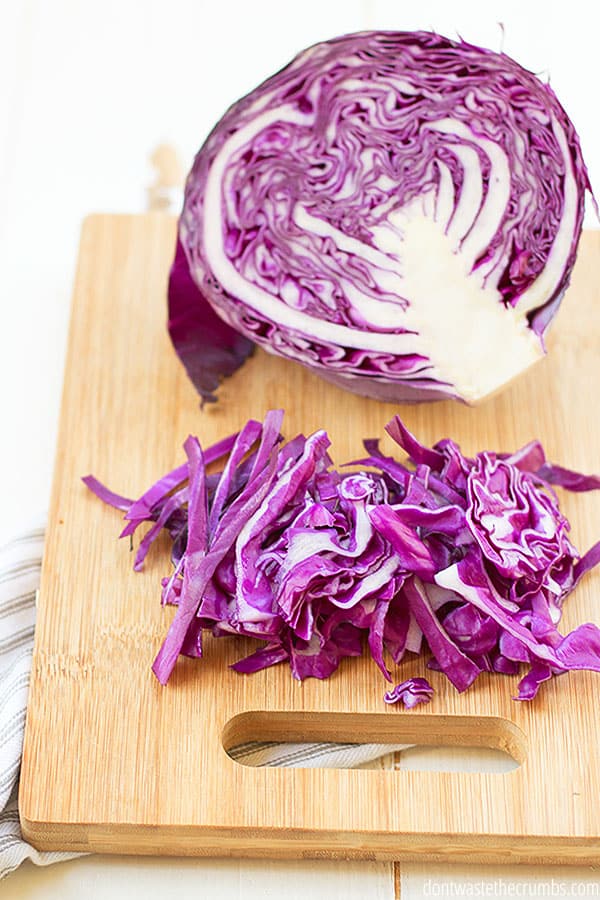
So… Which is the better deal: the CSA or Farmers Market?
The answer: it depends! I’m sorry to give such a vague answer, but you can see the number comparison above.
CSA #1 is more affordable than both farmers markets, although very comparable to farmers market #1.
- This CSA offers local and organic produce for typical grocery store prices.
- In my opinion, it is absolutely worth subscribing to CSA #1 instead of shopping the farmers markets with a savings up to $267.50 over the course of the CSA season (or $9.91 each week).
- The additional 10% savings on items in their farm store increasing my savings on other produce items too, effectively sealing the deal.
CSA #2 is more expensive than both farmers markets, although very comparable to farmers market #2 (which is priced similarly to Whole Foods).
It is significantly more affordable to shop Farmers Market #1 than subscribe to CSA #2 with a savings of $207.90 over the course of the CSA season (or $6.30 each week)
The Bottom Line on CSA’s and Farmer’s Markets
- Investing in a CSA is a big commitment, both in time and money, so don’t assume that the CSA is always a better deal.
- Ask the CSA staff for an example of a typical week and take it to whichever farmers market you’d most likely shop at.
- Compare the prices and if there’s no clear-cut answer, consider the befits to a CSA (and potential drawbacks) and other discounts they may offer so you’re comparing the whole package.
- Some families like the “experience” of a farmers market, and some prefer the convenience of a CSA. In the end, make the decision that best fits your family and your budget!
CSA Farmers Market FAQs
What is a Community supported agriculture system?
This is a group of people who commit to financially supporting a local farm, and then share in the produce for a specified amount of time. The time-frame could be 6 week, or a full season, depending on options available with the CSA. These CSA memberships support local farmers and provide fresh, local produce.
Are community supported agriculture worth it?
I have an article all about CSA’s that you can read here. This explains in depth what CSA’s are and helps you decide if they’re worth it for you and your family.
What is the purpose of a CSA?
CSA’s can serve several purposes. One is to support local farmers, which we know it is very important to support sustainable and regenerative agriculture – for the health of our families and the future of our food sourcing. CSAs can also be started by a community group of people on a share of land. These are people who want to invest in and take a share in fresh, local produce throughout the season.
More Ways to Save Money on Food
- Is a CSA worth it?
- Eating real food on a budget
- How to raise backyard chickens
- Ultimate guide to shopping with a farmer’s market budget


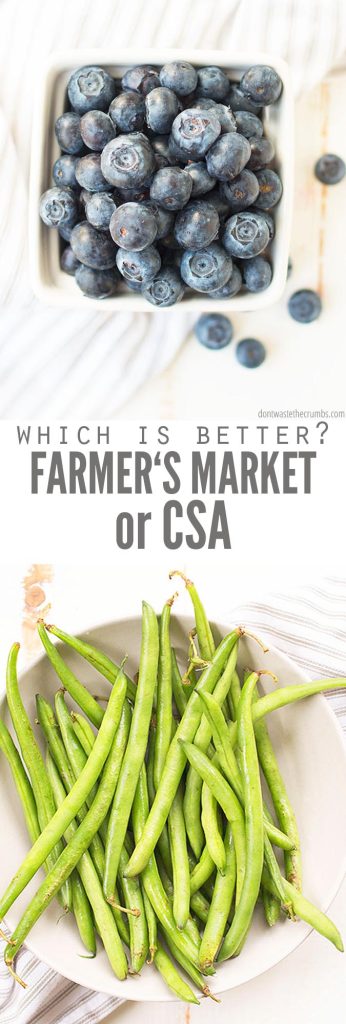
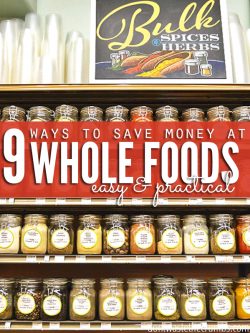

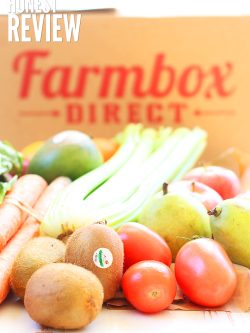


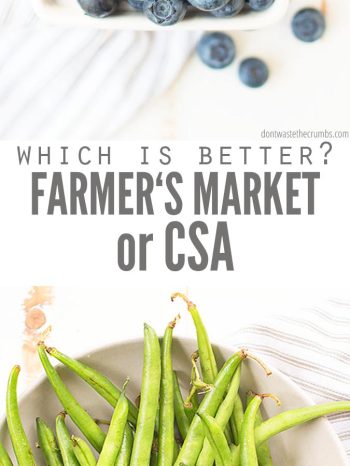
After a couple of unpleasant experiences at farmers markets I am more cautious. You really have to know who you are dealing with. Once I bought eggs at a farmers market in an upscale area.. They had dates with stickers on the carton. (Removable, not stamped on). At home I put some of the eggs in a sink of warm water to get them ready for baking, and some were floaters. Apparently stale eggs.
Once I was sold some strawberries that were hard, not sweet. If I buy at a regular market, the quality is usually reliable.
I get a monthly delivery of organic produce and other things included. I believe the company is honest and reputable. I order cartons of milk which saves me a trip to the market and because they are heavy. You can try freezing small serving size amounts in a greased muffin tin when you have too many greens.
I don’t know what “organic” means anymore. I have notice organic fruits not turning brown when they are cut, or staying on the counter a very long time without spoiling. maybe the have been treated with something.
How do we set up a farmers market? We have a gigantic non profit summer recreational area pool right in the heart of 3 vast populated communities here in Pittsburgh east suburbs. Who should we contact?
I honestly don’t know Daryl. I’d start with the town leadership and go from there!
I have done a CSA and they allowed us to pick and choose which veggies and fruits we wanted. So they planted based on that. Plus they delivered! I loved it! Sometimes we got some things we didn’t love, but it forced me to find recipes in which we could use it! Turned out we liked more than we thought 🙂
My issue was I didn’t get enough produce. I like to can and freeze extra for the winter and spring months.
So the next year I went to the local farmer markets especially at the end of the growing seasons and got special deals for buying in bulk. However having gone through the CSA, has helped pushed me to want to try new things. So this past year, I purposely buy something I haven’t tried before whenever I could. Turns out I love parsnips and rutabagas and I prefer orange carrots over purple or white carrots. I also came across a farmer selling an aloe plant & decided to try growing it. I love having it around! So I agree, there are benefits to each.
Slightly jealous of California CSA prices, the best we have ever been able to do in Illinois and Ohio was closer to $27 + per box. We are a two person household. I will say that being a CSA member is a great way to try new vegetables, you have paid for the box and you feel guilty at times if stuff goes to waste. Currently, we live in a small town in rural Ohio, local farmers markets do not have a great variety, we would have to drive an hour for a nice market with a good selection. The other thing I love about the CSA concept is that the ones we have participated in are pre-paid (one did bill monthly), so I never have to worry about having cash for the farmers market, I just go pick up the box (and somehow in my brain it appears “free” since no funds are exchanged). I break down the monthly cost on our budget analysis. For small families worried about quantity, most places are now offering half shares or we actually split a share with another couple. They are not as adventurous with veggies as we are, so we do get the more unusual things, but it has worked well for us.
I just paid for a CSA that, interestingly enough, has the same farms I buy from at the farm market! My friend got it last year and got a lot more for the money than I did. So this one is a win! There is more than one here, and the others weren’t worth it to me at all, for what they offered I would be supplementing a lot at the farm market anyway. It also wasn’t cost effective to buy meats, dairy or chicken. I get the same high quality stuff for less per week at the farm market or local stores.
I do the CSA and buy organic at the market. The CSA Im apart of lets me choose what I want and I get it delivered every other week. I juice and do smoothies so I rarely waste. I use the pulp from juicing cook it down into a vegetables stock for broths and bases for chili and meat. I will cut up the veggies and mix them with whatever protein, add a carb, and a side salad. I use my Vitamix to blend veggies and add them to my meals so if particular ones aren’t favorites it doesnt matter because my family doesn’t know. I save money by buying premium meats and expanding the meal with vegetables.
Where I live the only option is farm market and what we have had was not very good but two blocks from my house there a new farm market coming. I hope to have better results with it. Time will tell.
Amy, I have done a CSA for a few years now, and I hate to say that I do end up wasting some of it. But every year I get better. I do best when I make myself process it all the same day I buy it. There are a few things we get that we don’t love, like beets, so I’ve learned to cook those down, puree them, and freeze them in ice cube trays for smoothies. If I wash, dry, and properly store whatever greens we get, they last for a long time so they get used up. It takes some work, but my family has become more adventurous as a result and now my kids really look forward to checking out what’s in the box. Today marks the first day of the season for our CSA, and I’m determined to be a better steward of what we get. Maybe you can try a half share? I love farmer’s markets but our schedule makes it impossible to go each week. I have a certain day during the week to pick up my CSA but I can go any time I choose on that day – and it’s closer than the farmer’s market. That makes it a winner in my book!